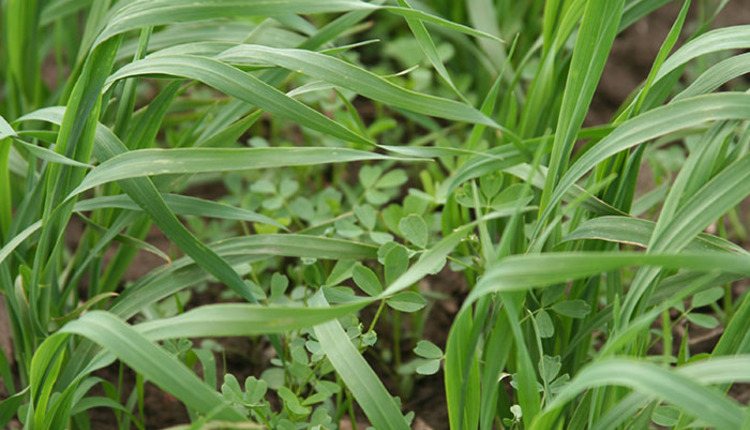Alfalfa nurse crops: friend or foe |
| By Hay and Forage Grower |
|
|
 Alfalfa seeding practices have changed pretty dramatically over the years. These days, many producers seed alfalfa without also using a nurse or companion crop such as oats or another cereal grain. Better herbicide options for so-called clear-seeded alfalfa fields exist today compared to years gone by. “Generally, nurse crops should only be used when needed,” says Jim Isleib, Michigan State University Extension crop production educator. “Waiting to harvest grain from a nurse crop such as oats can result in significant alfalfa stand reduction,” he adds. Isleib notes that removing the nurse crop early as forage will reduce some of the competitive effect on the perennial forage seeding. He suggests cutting the nurse crop no later than the boot stage, or just prior to heading. Aside from harvesting the nurse crop, another option is to spray out the cereal using glyphosate if a Roundup Ready alfalfa variety is planted or sethoxydim (Poast and others) if a conventional variety is used. If a nurse crop is used, keep seeding rates on the light side. The agronomist recommends 0.5 to 1 bushel per acre of oats, barley, or triticale. Field peas are sometimes included to improve the protein content of the companion crop forage, Isleib notes. There are some advantages to using a nurse crop. “When soil erosion is a serious threat, a nurse crop can save the day,” Isleib says. The MSU agronomist offers this list of nurse crop pros and cons for the producer who is weighing the options. Pros • Nurse crops provide erosion control where needed. • Nurse crops can help with weed suppression. • Roundup Ready alfalfa provides easier control of nurse crops at early stages of growth. • Nurse crops can provide extra forage during the establishment year. Cons • Alfalfa or mixed hay harvest usually begins sooner without nurse crops. • Nurse crops use water, nutrients, and sunlight otherwise available to the perennial forage crop. • Nurse crops generally reduce first-year perennial forage crop yield and may result in thinner stands. • Excessive nurse crop seeding rates add to seeding costs. |
